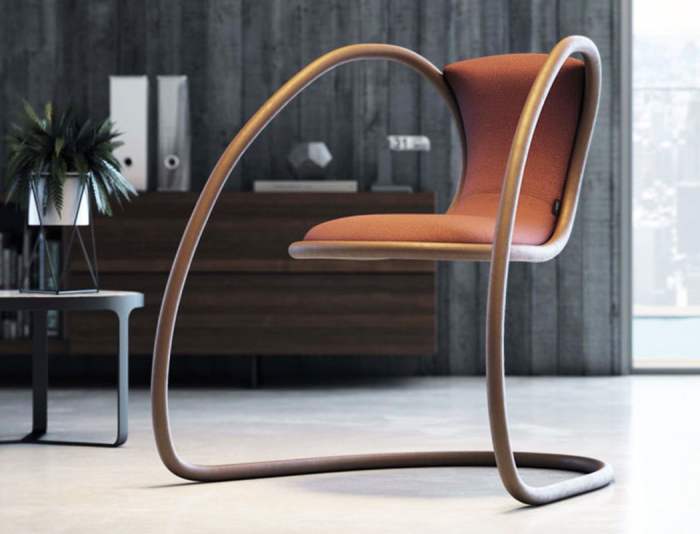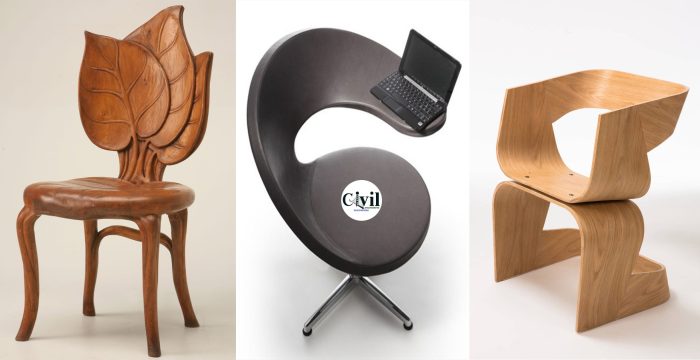Crafting Comfort: Exploring the World of Chair Design
As chair design takes center stage, this opening passage beckons readers into a world crafted with good knowledge, ensuring a reading experience that is both absorbing and distinctly original.
From the importance of ergonomic designs to the evolution of chair styles over time, this topic delves into the intricate details that make chairs both functional and aesthetically pleasing.
Importance of Chair Design

Chair design plays a crucial role in maintaining the health and productivity of individuals, especially in work environments. Ergonomic chair design, in particular, is instrumental in preventing back pain and promoting overall well-being.
Impact on Back Pain Prevention
Ergonomic chair design focuses on providing proper support to the lower back, promoting good posture, and reducing strain on the spine. By aligning the body in a neutral position, ergonomic chairs help prevent back pain that can result from prolonged sitting.
Enhancing Productivity
The design of a chair can significantly impact productivity in work environments. Comfortable and supportive chairs can reduce discomfort and fatigue, allowing individuals to focus better on their tasks and maintain higher levels of efficiency throughout the day.
Examples of Innovative Chair Designs
- The Herman Miller Aeron Chair: Known for its advanced ergonomic features, the Aeron chair provides adjustable support to different parts of the body, ensuring optimal comfort and posture.
- The Steelcase Gesture Chair: This chair is designed to support a wide range of sitting positions, accommodating various work styles and promoting movement throughout the day to prevent stiffness and discomfort.
- The Humanscale Freedom Chair: With its self-adjusting recline mechanism and lumbar support, the Freedom chair offers personalized comfort and promotes healthy sitting habits for long hours of work.
Elements of Chair Design
When it comes to designing chairs, various elements play a crucial role in ensuring functionality, comfort, and aesthetics. Let's delve into the key components that make up the design of chairs.
Role of Materials in Chair Construction
Materials such as wood, metal, and plastic are commonly used in chair construction, each offering unique benefits and characteristics.
- Wood: Known for its durability and classic appeal, wood is often used in crafting traditional and modern chairs. It can be shaped into intricate designs and provides a warm and inviting look.
- Metal: Metal chairs are valued for their strength and sleek appearance. They are often used in contemporary designs and are lightweight and easy to maintain.
- Plastic: Plastic chairs are lightweight, affordable, and versatile. They come in a variety of colors and styles, making them a popular choice for outdoor and casual settings.
Importance of Ergonomic Factors in Chair Design
Factors such as seat height, depth, and backrest angle are critical in ergonomic chair design to ensure proper support and comfort for the user.
- Seat Height: The height of the seat should allow the user's feet to rest flat on the floor, promoting good posture and reducing strain on the legs.
- Seat Depth: A comfortable seat depth ensures that the user's back is supported without putting pressure on the knees. It allows for proper alignment of the spine.
- Backrest Angle: The angle of the backrest should support the natural curve of the spine, promoting a healthy sitting posture and reducing the risk of back pain.
Influence of Aesthetics and Style in Chair Design
Aesthetics and style play a significant role in chair design, influencing the overall look and feel of the piece.
- Form: The shape and form of a chair contribute to its aesthetic appeal and can convey a sense of modernity, tradition, or uniqueness.
- Color and Finish: The color and finish of a chair can enhance its visual impact and complement the existing decor of a space.
- Details and Embellishments: Intricate details, such as carvings, upholstery, or unique textures, add character to a chair and showcase craftsmanship.
Evolution of Chair Design
The evolution of chair design spans centuries, reflecting the changing needs, materials, and design philosophies of each era. From ancient civilizations to modern times, chairs have undergone significant transformations in both aesthetics and functionality.
Ancient Civilizations
In ancient Egypt, chairs were symbols of power and authority, often reserved for royalty and nobility
Medieval and Renaissance Period
During the medieval and Renaissance periods, chairs became more ornate and decorative, reflecting the artistic styles of the time. Elaborate carvings, intricate details, and luxurious materials were used to create chairs that were both functional and visually striking. The invention of the Windsor chair in 18th century England marked a shift towards more practical and mass-produced seating options.
Industrial Revolution and Modern Times
The Industrial Revolution brought about significant changes in chair design, with the introduction of new materials such as steel, plastic, and fiberglass. This led to the creation of iconic designs like the Eames Lounge Chair and the Barcelona Chair, which combined form and function in innovative ways.
Today, contemporary chair design continues to evolve, with a focus on sustainability, ergonomics, and cutting-edge technology.
User-Centric Chair Design

User-centric chair design focuses on creating chairs that prioritize the comfort and well-being of the users. This approach takes into consideration user feedback, ergonomic research, and customization options to ensure that chairs meet the diverse needs and preferences of individuals.
User Feedback and Ergonomic Research
User feedback plays a crucial role in shaping the design of chairs. By gathering insights from users about their preferences, comfort level, and any pain points they experience while sitting, designers can make informed decisions to improve the overall user experience.
Additionally, ergonomic research helps in understanding the human body's biomechanics and how different chair features can support proper posture and reduce the risk of musculoskeletal issues.
- Designers often conduct surveys, interviews, and usability tests to gather user feedback on existing chair designs.
- Ergonomic research informs the design of chairs by considering factors such as seat height, backrest angle, lumbar support, and armrest positioning.
- By integrating user feedback and ergonomic principles, designers can create chairs that promote comfort, productivity, and overall well-being.
Customization Options in Chair Design
Customization options in chair design allow users to personalize their seating experience based on their unique preferences and needs. From adjustable height and tilt mechanisms to customizable upholstery and lumbar support, these options ensure that individuals can tailor the chair to fit their body and work requirements.
- Adjustable features like seat height, armrests, and backrest angle enable users to find the most comfortable sitting position.
- Customizable materials and finishes give users the flexibility to choose a chair that matches their aesthetic preferences and workplace decor.
- By offering a range of customization options, chair designers can cater to a diverse user base and provide ergonomic solutions for various body types and work settings.
Universal Design for All Users
Universal design principles aim to create products, including chairs, that are accessible and usable by individuals of all ages, sizes, and abilities. By incorporating features like adjustable seat widths, weight capacities, and intuitive controls, designers can ensure that chairs accommodate the needs of a diverse user population.
- Chairs with adjustable seat widths and weight capacities can accommodate users of different body sizes and shapes.
- Intuitive controls and user-friendly adjustments make it easier for individuals with mobility or dexterity limitations to customize their chair settings.
- Universal design promotes inclusivity and ensures that everyone, regardless of age or ability, can benefit from the ergonomic features and comfort offered by modern chairs.
Final Wrap-Up
In conclusion, chair design is a fascinating blend of artistry and functionality, with each piece telling a unique story of innovation and comfort. Dive into the world of chair design and discover the perfect seat for your lifestyle and needs.
FAQs
How does chair design impact productivity in work environments?
Chair design plays a crucial role in providing comfort and support, which can help reduce discomfort and promote better focus and productivity in the workplace.
What materials are commonly used in chair construction?
Materials such as wood, metal, and plastic are often used in chair construction, each offering unique benefits in terms of durability, aesthetics, and comfort.
How do traditional chair designs differ from contemporary trends?
Traditional chair designs often focus on classic styles and craftsmanship, while contemporary trends may incorporate modern materials and innovative forms to create a more eclectic look.
What is universal design in chair creation?
Universal design aims to make chairs accessible and user-friendly for individuals of all ages and abilities, promoting inclusivity and comfort for a diverse range of users.




